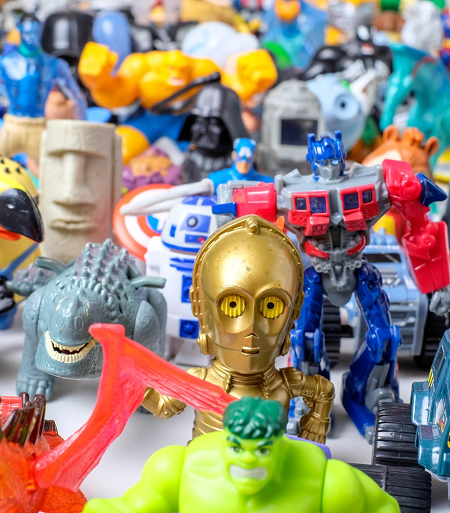Newsroom
Lead in Fast Food Toys
Research project from RMU environmental science students & professors finds toxic metal in Happy Meal toys to be a landfill concern.

"With these toys, the small amount of leached material doesn't seem like much until you realize the vast number of them that are out there."
Toys in Happy Meals and other fast food children's meals may contain levels of lead high enough to potentially contaminate landfills, according to a scientific analysis of fast food toys by a team of Robert Morris University environmental science students and professors.
The study, "Fast Food Premium Toys as a Significant Source of Lead and Chromium to the Environment," was published in the Journal of Toxicology and Environmental Health Sciences in December. It calls electronic fast food toys a "previously unreported and significant source of … lead and chromium to the environment" and recommends they be treated as electronic waste and disposed of appropriately.
The RMU study began as the senior research project of students Andrew Lorenzi and Benjamin Mentzer, and looked at 35 electronic toys from McDonald's and Burger King distributed in children's meals between 1997 and 2015. It found that 22 of the toys — most recently a McDonald's "Minions" toy from 2013 — contained lead in concentrations above permitted federal limits and enough to classify them as hazardous waste.
"With these toys, the small amount of leached material doesn't seem like much until you realize the vast number of them that are out there," said RMU environmental science professor Daniel Short, the study's lead author. Over 220 million Happy Meals are sold annually, the study notes.
Short's students followed methods approved by the Environmental Protection Agency, he said, taking apart the toys to expose their electrical components and then leaching them with an acidic solution to approximate landfill conditions. They then used a spectrometer to analyze the resultant material, and found low levels of the toxic metals barium, cadmium, chromium, and mercury, and significant levels of lead. The study concludes that the lead probably comes from solder in printed wire boards.
"These findings are important because some of what we dispose of into the regular trash stream does contain chemicals that are harmful to humans and the environment," Short said. "There are rules and regulations in place to prevent such an occurrence; however, they are not always strictly enforced."
